The Adventurer's Manual
Welcome, brave traveler! Within these scrolls, you shall find the wisdom needed to wield Dice Roller DnD with the skill of a seasoned mage. Whether you are a fledgling adventurer or a veteran of many campaigns, this guide will illuminate your path.
Background
Dungeons & Dragons (D&D) is a fantasy tabletop role-playing game that uses dice to embody the randomness of exploration and battle. This digital tool aims to enhance your tabletop experience by providing comprehensive and customizable dice rolling functions.
Dice Types
-
d4 (4-sided die)
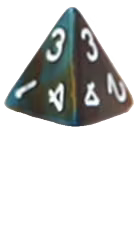
The pyramid-shaped d4 is commonly used for small weapon damage (daggers, darts), minor healing spells, and Magic Missile damage. Each face shows numbers 1-4, and the result is read from the bottom edge or top vertex.
-
d6 (6-sided die)
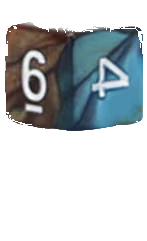
The classic cube-shaped die used for most weapon damage (shortswords, shortbows), character ability scores (roll 4d6, drop lowest), and many spell effects like Fireball. This is the most familiar die shape to most people.
-
d8 (8-sided die)
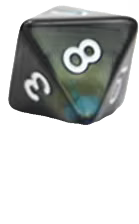
The octahedral d8 is used for medium weapon damage (longswords, warhammers), higher-level healing spells, and hit dice for classes like rogues and clerics. Each triangular face displays numbers 1-8.
-
d10 (10-sided die)
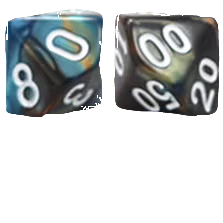
The pentagonal trapezohedron shows numbers 0-9 (with 0 representing 10). Used for heavy weapon damage (heavy crossbows, glaives), ranger and fighter hit dice, and as part of percentile rolls when paired with another d10.
-
d12 (12-sided die)

The dodecahedron is the largest standard damage die, used for massive weapons (greataxes), barbarian hit dice, and powerful spell effects. Each pentagonal face shows numbers 1-12.
-
d20 (20-sided die)
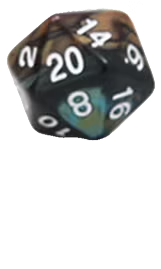
The iconic icosahedron is the heart of D&D. Used for all attack rolls, ability checks, and saving throws. Rolling a natural 20 is a critical success, while a natural 1 is a critical failure. This die determines most of your character's successes and failures.
-
d100 (Percentage die)
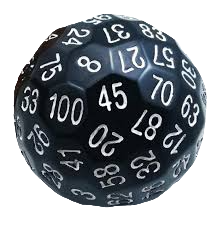
Actually two d10s rolled together (one for tens, one for ones), the d100 generates numbers 1-100. Used for percentage-based effects, random encounter tables, treasure generation, and Wild Magic surge effects. Some specialized d100s exist as golf-ball sized dice with 100 faces.
Getting Started
- 🗺️ Choose Your Realm: Begin by selecting your role: Player or Dungeon Master.
- 🎲 Create Your Rolls: Add and configure your dice rows with desired labels and settings.
- ⚔️ Roll the Dice: Click Roll! and let fate dictate your journey.
Dice Row Components
- 📝 Label: Name your dice roll (e.g., "Attack Roll", "Saving Throw", "Initiative").
- 🎲 Dice Type: Select from d4, d6, d8, d10, d12, d20, or d100.
- 🔢 Number of Dice: Choose how many dice to roll (1-20).
- ➕ Modifier: Add or subtract a fixed value from your total (-99 to +99).
- ⚙️ Advanced Options: Click the gear icon to reveal more features.
Advanced Options Explained
- 🎯 Advantage/Disadvantage: Roll twice and keep the higher (advantage) or lower (disadvantage) result.
- 🔄 Reroll Ones: Automatically reroll any dice that show a 1.
- 📉 Drop Lowest: Remove the lowest die result from your total.
- 📈 Drop Highest: Remove the highest die result from your total.
- ⬆️ Minimum per Die: Set a minimum value for each individual die (1-6).
Advanced Usage
- 🛡️ Quick Rolls: Use pre-configured buttons for instant common rolls.
- 📜 Track History: Keep a chronicle of your rolls by visiting the Roll History section.
- 🎨 Choose Themes: Personalize your experience with themes like 'Forest' or 'Ocean.'
- 💾 Save/Load: Your dice configurations are automatically saved in your browser.
- 📤 Export/Import: Backup your data or share configurations with other players.
- 🔊 Sound Effects: Toggle dice rolling sounds on/off in the settings.
FAQ
- Q: How do I save my settings?
A: Your settings are saved automatically with advanced persistent enchantments. - Q: Can I export my roll history?
A: Yes! Use the export feature to download your chronicle. - Q: What's the difference between Player and DM interfaces?
A: The Player interface focuses on character actions while the DM interface includes monster rolls, trap checks, and encounter management tools. - Q: Can I use this offline?
A: Yes! The app works offline once loaded in your browser. - Q: How do I share my dice configurations?
A: Use the Export feature to save your setup, then share the file with others who can Import it. - Q: What does "Minimum per Die" do?
A: It sets the lowest possible value for each individual die. For example, with a minimum of 3, a d6 can only roll 3-6. - Q: Can I roll multiple types of dice at once?
A: Yes! Add multiple dice rows with different dice types and roll them all with one click. - Q: How many dice can I roll at once?
A: You can roll up to 20 dice per row, and add as many rows as you need.
Tips & Tricks
- 🌟 Name Your Rolls: Use descriptive labels like "Longsword Attack" or "Fireball Damage" for easy reference.
- ⚡ Quick Roll Shortcuts: Set up your most common rolls as dice rows for instant access.
- 📱 Mobile Gaming: The app is fully mobile-responsive for gaming on the go.
- 🎭 Role Switching: Use the Chronicle to track both Player and DM rolls in the same session.
- 🎪 Theme Matching: Choose a theme that matches your campaign setting for immersion.
Embrace the fate the dice bestow upon you. May your rolls be ever in your favor!